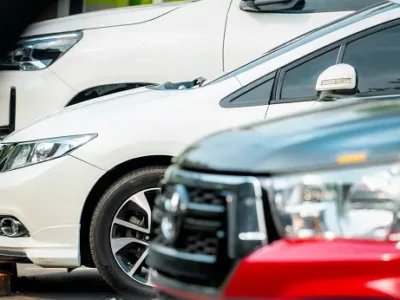Understanding Auto Insurance Coverage: A General Overview
Have you ever scratched your head, furrowing your brows over the nitty-gritty details of your auto insurance? Don’t fret! We’re here to break it down for you, making it as easy as pie. Put plainly, auto insurance is a contract between you and the insurance company that safeguards you against financial loss in the event you have an accident or theft. In exchange for your paying a premium, the insurance company agrees to pay your losses as outlined in your policy.
The main types of coverage available are liability, collision, and comprehensive coverage. We’ll start with liability insurance, which is crucial and required in nearly every state. Car owners, listen up: this coverage helps if you cause harm to another person or damage to another vehicle or other property while driving your car. A bit of a no brainer, right? Collision coverage then steps in to shield you from the cost of damage to your car from a collision, regardless whether it was with another vehicle or, say, a stubborn old oak tree. Last but not least, comprehensive coverage pays for the value of your car if it’s stolen, or if you encounter damage from anything other than crashes like pesky hail storms or maybe that one neighborhood kid with a passion for baseball.
Remember though, with each of these types of auto insurance, there are coverage limits that decide the most an insurance company will pay for a single accident or claim. Beyond these basics, a few supplementary coverages can be handy. For instance, medical payments coverage or personal injury protection covers medical expenses incurred after an auto accident, regardless of who’s at fault. Uninsured motorist coverage is also a lifesaver, protecting you when the other driver operating your car has no insurance or not enough insurance. On top of that, there’s even coverage to pay for the cost of towing and labor if your car breaks down. The gap insurance, offered by auto dealers and lenders, covers the difference between what you owe on the car and its current market value – invaluable if your car is totaled.
Understanding auto insurance isn’t just a stroll in the park, it’s as essential as buckling up every time you drive. It’s all about balancing your budget and your peace of mind, so you can hit the road with a bounce in your step. Your insurance coverage should suit your exact needs and be flexible enough to handle the potholes life might throw your way. As you’re shopping for auto insurance, take note of the insurance rates, the insurance premiums, and what the insurance company will not pay. Don’t get left in the dust driving without insurance – remember that buying auto liability insurance is a critical part of owning a car. After all, you wouldn’t play cricket without a helmet, would you? So, put your foot on the gas, and let’s drive into a better understanding of auto insurance coverage together!
Types of Auto Insurance: Unveiling the Various Auto Coverages
Well mate, unraveling the mystery of auto insurance policies and their various types can get your head spinning faster than a ride at the county fair. It’s like trying to navigate through a bustling metropolis without a map! At the heart of it, auto policies mainly include liability insurance; however, there’s a heck of a lot more under this umbrella. There’s a smorgasbord of auto insurance policies to ponder over, from personal auto insurance to state insurance. Whether you’re cruising the streets of California or trekking through the snow-laden roads in Maine, these policies are tailored to cover damage you may cause while driving your car. And, it’s not just you who is covered; these insurance plans also cover someone else driving your car with your consent. So hop on board, and let’s break it down, shall we?
Starting off, the granddaddy of auto insurance, liability coverage, is something every state requires car owners to carry. When you’re at fault in a crash, this policy doesn’t hold back. Property damage coverage kicks like a mule in these scenarios, paying for the havoc your car causes to another vehicle or property. Say, you were daydreaming of white sandy beaches and your mind was miles away, resulting in you sideswiping a shiny red Ferrari. Don’t sweat, your insurance company pays for the damages, as per market value of your car. Taking it a notch higher, other types of insurance like comprehensive and collision coverage protect your car from events such as theft, vandalism, or a pesky squirrel knocking an apple from a tree that lands on, and dents, your pristine hood. This insurance covers the repair or replacement costs, which is music to your ears if you’re financing a car.
Also, many auto insurers offer supplemental insurance such as towing and labor coverage for when you find yourself up the creek without a paddle. An enticing package, eh? Enough jibber-jabber though, let’s talk turkey about the cost of coverage. It’s worth noting that your auto insurance premiums will vary based on factors such as how often you use your car, where you live, and a bunch of other stuff. Despite this, your provider should let you customize coverage amounts to suit your exact needs and budget so that you don’t have to rob a bank to cover the cost. Besides, some rockstar companies also offer guaranteed auto protection, or GAP insurance as savvy folks like to call it. If you owe more on your car than it’s worth – say after a major accident – GAP insurance comes to the rescue. Lastly, a noteworthy mention is the fact that an insurance company might deny a claim if an unlicensed driver or someone without your permission was behind the wheel of your car at the time of the incident. So, be mindful of who you hand your car keys to!
Examining Insurance Costs: A Look into Auto Insurance Costs
Well isn’t auto insurance a bag of worms! It sure enough ain’t straightforward, but let’s see if we can make heads or tails of it. Firstly, we gotta break it down and let me tell you, insurance pays for quite a fair amount. An additional insurance perk of your car insurance policy is that it provides coverage when someone else’s car, borrowed with permission of course, gets you into a pickle. So whether you’re driving another person’s car or if another driver operating your car causes mayhem, you’re covered – barring a few odd exceptions. Say, for instance, if your pal hot-foots it with your precious four-wheels without your knowledge, then your policy will not cover that – that’s theft!
Hold your horses, ’cause there’s more. In the gorgeous Golden State, it’s worth noting that the insurance company must offer you this coverage. By George, nearly every state requires car insurance, not only insurance in California. Typically, a policy also provides coverage that can pay for damages caused by you or even another driver operating your car. However, when you are choosing the insurance, consider that liability insurance pays for injuries or damage you cause to others, while comprehensive coverage offers wider protection against factors out of your control, like a tree branch dropping on your vehicle. On this score, car insurance works to protect you, your beloved motor, and additionally cover you and other family members hoofing it around town. Therefore:
- Buying auto insurance is more than a chore, it’s a must-do.
- Insurance quotes aren’t just gobbledygook, they help you understand the cost of the policy.
- Mind you, your health insurance company may cover some aspects of an accident, but it’s no substitute for car insurance.
What a riot, eh? Insurance helps, in more ways than one is usually aware of. Let’s wind up here, with the parting thought that when you grant someone the latitude to joyride your car with your permission, bear in mind the potential consequences on your auto insurance policy cost.
Necessity of Liability Coverage in Auto Insurance
Y’know, folks often wonder about the necessity of liability coverage in auto insurance, and I gotta tell you, it’s not just for kicks. Your auto insurance protects you from those “Oops!” moments on the road – not just simple fender benders. It’s like an umbrella for a rainy day, providing you with protective cover from the weight of heavy financial burdens that could come pouring down. Heck! It ensures you aren’t left high and dry with a massive bill due to someone else’s goof behind the wheel.
Hang on a minute though, let’s chew the fat over exactly what the ticking points of having this type of coverage are:
- The coverage can pay for repairs to the other party’s vehicle if you’re considered at fault in an accident, saving your wallet from a painful heartache.
- It supports medical bills for the other party, as sad and unexpected as it may be, crashes can happen and folk can get hurt.
- Damages beyond vehicles, like city property that took an unfortunate hit, your coverage can tackle those pesky bills, too.
Honestly, you’d really be up a creek without a paddle if you found yourself without the comforting blanket of liability coverage. By taking care of possible financial obligations stemming from an unfortunate incident on the road, it really is your knight in shining armor rescuing you from a financial dragon. So, buddies, having this coverage isn’t just about ticking a box, it’s about peace of mind. Now, that’s worth more than a penny for your thoughts, wouldn’t you say?
Exploring Gap Insurance in Car Insurance
Well, well, well! You’ve got yourself a shiny new car and gosh, isn’t she a beaut! But wait a minute, do you know about that sneaky little twist known as gap insurance? It might be just the ticket if you’re duckin’ and divin’ through the choppy waters of car insurance. Here’s the scoop: gap insurance – or as some folks like to call it, ‘Guaranteed Auto Protection’ – ain’t your standard car insurance. It’s the night in shining armor that swoops in to save the day when disaster strikes and regular insurance just doesn’t cut the mustard. Bridging the gap between what your car is worth and what you still owe on it, it’s that lifeline you didn’t know you needed.
Boy oh boy! When your heart drops to your boots and your flashy set of wheels is totaled or stolen, that’s when this knight comes gallivanting in. Your standard car insurance protects only up to the fair market value of your car, leaving you high and dry for the remaining debt. But, hold onto your hats, ’cause here’s where gap insurance comes to the rescue – its coverage can pay off the rest of those pesky auto loans to leave you debt free. In essence, this wonder of the insurance world is like a get-out-jail-free card when you’re stuck between a rock and a hard place.
Just to give you an idea, consider these scenarios when gap insurance can be your superhero:
- You’re still paying off a car loan but your vehicle is stolen and not recovered
- Your spanking new car is written-off in an accident and you owe more on the loan than the car is worth
So next time, don’t just jump in headfirst. Do your insurance homework, and remember, an ounce of prevention is worth a pound of cure!
Shopping for Auto Insurance: How Insurance Works and Finding the Best Automobile Insurance
Well, well, well, let’s cut to the chase, shall we? Shopping for auto insurance can feel like a roller-coaster ride with its twists and turns, but when you’ve got the right knowledge in your bag, it ain’t rocket science. Here’s how insurance works, in a nutshell: Just like a trusty umbrella on a rainy day, insurance protects you against financial hits when life throws a curveball. It’s a cash cushion, if you will, a safety net you pay a small sum for every month, to guard against that eventual storm. Whether you’ve just caught a fender-bender or had your sparkly new ride stolen outta the blue, the coverage can pay to repair or replace your car, depending on your policy.
Hold your horses though, there’s a catch. Not all insurance companies are created equal and hunting down the best auto insurance, now that’s a whole other ball game. Put your thinking cap on and don’t judge a book by its cover. Be mindful that the cheapest plan won’t always cut the mustard. Instead, cross your T’s and dot your I’s. Look at the depth of coverage, customer reviews, and claim settlement ratio. It’s also wise to:
- Brush up on your state’s minimum coverage requirements.
- Keep an eye out for discounts – you’d be surprised how many you could qualify for.
- Compare policies apples-to-apples – make sure each quote you consider offers the same level of protection.
So there you have it. Arm yourself with knowledge, and sooner than later, you’ll be driving off into the sunset with an auto insurance that’s got your back. With a little legwork, you’ll end up with a smile on your chops knowing you’ve secured the best deal without breaking the bank.
Conclusion
In conclusion, opting for insurance protects an individual or business from potential future losses. This is important as it reduces risks and offers a safety net for unexpected hurdles that might otherwise have a severe financial impact. Essentially, insurance is a contract, known as a policy, in which an individual or entity receives financial protection against losses from an insurance company. Notably, the company binds itself to cover the insured party, ensuring peace of mind and stability during turbulent times. Variety and scope of coverage can greatly affect benefits that policyholders receive.
Depending on the type of policy and the specifics of the contract agreed upon, the coverage can pay for losses up to the limits defined in the policy. This underscores the important role of insurance as a buffer against significant financial harm. However, understanding specific needs and identifying the right type of insurance based on individual risks can massively influence the effectiveness of insurance protection. Therefore, to fully benefit from this arrangement, it’s pivotal to thoroughly analyze individual needs and potential risks before choosing an insurance product.
Also, bear in mind that insurance serves as a strategic tool in risk management rather than an outright solution to all potential problems. Nonetheless, with the right coverage and understanding of its workings, insurance becomes an invaluable asset in maintaining financial safety.
FAQ’s:
Q1. What is auto insurance?
A1. Auto insurance is a type of insurance that provides financial protection against physical damage and/or bodily injury resulting from traffic collisions and against liability that could also arise from incidents in a vehicle. Auto insurance protects you and your vehicle, and coverage can pay for repairs, medical expenses, and other costs.
Q2. What does auto insurance cover?
A2. Auto insurance covers physical damage and/or bodily injury resulting from traffic collisions, as well as liability that could arise from incidents in a vehicle. Coverage can pay for repairs, medical expenses, and other costs.
Q3. How much auto insurance do I need?
A3. The amount of auto insurance you need depends on your individual situation. Generally, it is recommended to have enough coverage to protect your assets in the event of an accident.
Q4. What is the difference between liability and comprehensive auto insurance?
A4. Liability auto insurance covers damage and/or bodily injury resulting from traffic collisions, while comprehensive auto insurance covers damage to your vehicle from incidents other than traffic collisions, such as theft, fire, and vandalism.
Q5. What is uninsured/underinsured motorist coverage?
A5. Uninsured/underinsured motorist coverage is a type of auto insurance that provides financial protection if you are involved in an accident with a driver who does not have insurance or does not have enough insurance to cover the costs of the accident.
Q6. What is a deductible?
A6. A deductible is the amount of money you must pay out of pocket before your auto insurance coverage kicks in.
Q7. What is gap insurance?
A7. Gap insurance is a type of auto insurance that covers the difference between the amount you owe on your vehicle and the amount your auto insurance will pay in the event of a total loss.

Aleksandra Kosanovic
Aleksandra, a leading Insurance Risk Analyst with a wealth of experience, specializes in evaluating and managing potential insurance risks. Her expertise lies in crafting strategies that optimize coverage while minimizing vulnerabilities. Through this platform, Aleksandra provides readers with invaluable insights, helping them make well-informed insurance choices in a dynamic market landscape.




